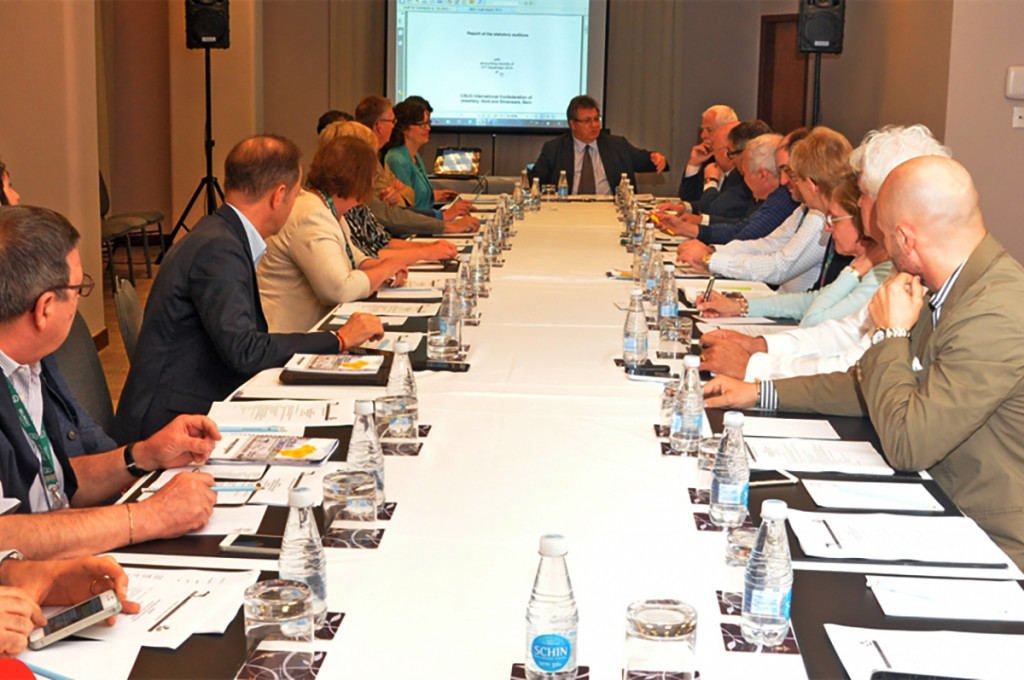MISSION
The World Jewellery Confederation focuses on issues which concern the industry and trade worldwide, primary among them the protection of consumer confidence. It does so by promoting and enabling the harmonisation and regulation of technical standards, terminology, operating principles, and practices related to sustainability, responsible sourcing and transparent supply chains.
Functioning as a centre of knowledge and education, the Confederation pursues its objectives through collaborative debate and discussion, research, learning and communication.
To advance the objective of universally harmonised standards and terminology, the Confederation maintaIns its Blue Book system and also produces other guidance documents.
The Confederation develops and supports responsible sourcing and sustainable initiatives and programmes that address threats to the integrity of gemstones, precious metals and finished jewellery.

Thai government and world jewellery industry leaders greet delegates at the 2017 CIBJO Congress in Bangkok, Thailand.
STRUCTURE
The World Jewellery Confederation is organized according to sectors, or areas of interest. They are: Sector A (Gem Materials, Trade and Laboratories), Sector B (Jewellery Distribution) and Sector C (Jewellery Manufacturing/Technology/Precious Metals).
The official bodies of CIBJO are the General Assembly of Delegates; the 30-person Board of Directors; the Executive Committee, which is made up of 15 members of the Board, the President’s Council; the Internal Finance and Audit Committee and the External Auditor. The CIBJO Secretariat and Administration represents CIBJO for all routine matters of internal business.
The powers and duties of the General Assembly are to elect the Officers, who are President, Vice Presidents and the Treasurer; to elect the Board of Directors; elect the External Auditor; and to approve any proposed changes to the Statutes and the By-Laws.
The governance of World Jewellery Confederation is vested in its Board of Directors, which meets regularly several times a year.
The Officers and at least five other member representatives make up the President’s Council, each of whom is appointed by the President.
Commissions are formed to focus on specific topics of interest, and they may cover issues falling under the purview of one or multiple sectors.

Active commissions currently include the Diamond Commission, the Coloured Stone Commission, the Pearl Commission, the Gemmological Commission, the Marketing and Education Commission, the Precious Metals Commission, the Ethics Commission, the Coral Commission, and the Responsible Sourcing Commission.
There are additionally committees focusing on subjects specific to different parts of the industry.
Currently, these committees include the Technology Committee and the Laboratory-Grown Diamond Committee and the Responsible Sourcing Nomenclature Committee.
While the various Confederation bodies meet regularly, all gather at the CIBJO Congress. It typically is held each year in a different country, with one or more of the member associations acting as hosts.

The World Jewellery Confederation’s General Assembly in session at the 2012 CIBJO Congress in Vicenza, Italy.

A meeting of the Board of Directors at the 2015 CIBJO Congress in Salvador da Bahia, Brazil.

The Precious Metals Commission deliberates at the 2018 CIBJO Congress in Bogotá, Colombia.
